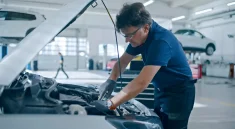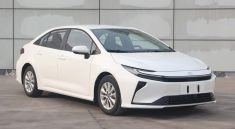Top Ten Things – The rise of next-generation electric vehicles is reshaping how cities think about transportation. With advancements in battery technology, autonomous driving, and smart connectivity, these vehicles are not just eco-friendly alternatives but also integral to a future of efficient, sustainable mobility. Automakers and tech innovators are racing to produce EVs that cater to both individual drivers and urban transit systems.
“Read More: Experience the Thrill of Festival Songkran 2025 with a Private Tour”
Compact Urban EVs Designed for Congested Cities
Small, agile electric cars are becoming essential in densely populated cities. They can navigate narrow streets, park in tight spaces, and offer impressive range for daily commutes. Their efficiency makes them a practical choice for urban professionals who prioritize sustainability without sacrificing convenience.
Long-Range Models Breaking the Distance Barrier
Early electric cars struggled with limited range, but next-gen models are pushing past 400 miles per charge. This leap in battery capacity allows drivers to travel long distances without frequent charging stops. It’s a major factor in persuading more people to switch from gasoline-powered vehicles.
Autonomous Electric Shuttles for Public Transit
Cities are experimenting with autonomous electric shuttles to reduce traffic congestion and improve accessibility. These vehicles operate on fixed routes, transporting passengers efficiently and safely. By eliminating the need for a human driver, they can run around the clock, providing consistent service for commuters.
“Read About: Top 10 Tech Trends in 2025: From AI to Quantum Computing”
High-Performance EVs for Driving Enthusiasts
Electric vehicles are no longer just about efficiency—they are also about excitement. In fact, sports-oriented EVs now boast rapid acceleration, precise handling, and sleek designs. As a result, this segment proves that sustainability and high performance can coexist, thereby attracting a new audience to electric mobility.
Smart Charging Infrastructure Supporting Growth
As EV adoption increases, cities are responding by expanding charging networks. Moreover, fast-charging stations, wireless charging pads, and solar-powered hubs are making it easier than ever to keep vehicles powered. Consequently, this infrastructure is crucial for overcoming range anxiety and supporting a fully electric urban transport system.
Two-Wheel Electric Solutions for Short Trips
Electric scooters and bikes are becoming vital components of urban mobility. In addition, they are affordable, portable, and ideal for short commutes. For this reason, many cities have integrated shared e-scooter programs, giving residents flexible options for quick, eco-friendly travel.
Modular EV Designs for Versatile Use
Some manufacturers are developing modular EVs that can be adapted for different needs—cargo transport, ride-sharing, or even mobile pop-up shops. Because of this flexibility, they are attractive for businesses and urban planners seeking multi-purpose solutions. Furthermore, such designs make it easier to repurpose vehicles as demands evolve.
Sustainable Materials in Vehicle Manufacturing
The next generation of EVs goes beyond clean energy by using recycled and eco-friendly materials in their construction. For example, interiors may feature plant-based fabrics, reclaimed metals, and sustainable plastics. Ultimately, these innovations reduce the overall environmental impact of production.
Integration with Smart City Systems
Modern EVs are designed to connect with smart city infrastructure. Through this connectivity, real-time traffic data, adaptive navigation, and automated parking systems improve efficiency and reduce congestion. Therefore, this integration ensures that electric mobility works hand in hand with urban planning.
Affordable Entry-Level EVs Expanding Accessibility
To encourage mass adoption, automakers are introducing budget-friendly EVs. Importantly, these models maintain quality and safety standards while offering a price point that’s competitive with traditional vehicles. As a result, greater accessibility allows more people to participate in the shift toward sustainable mobility.


